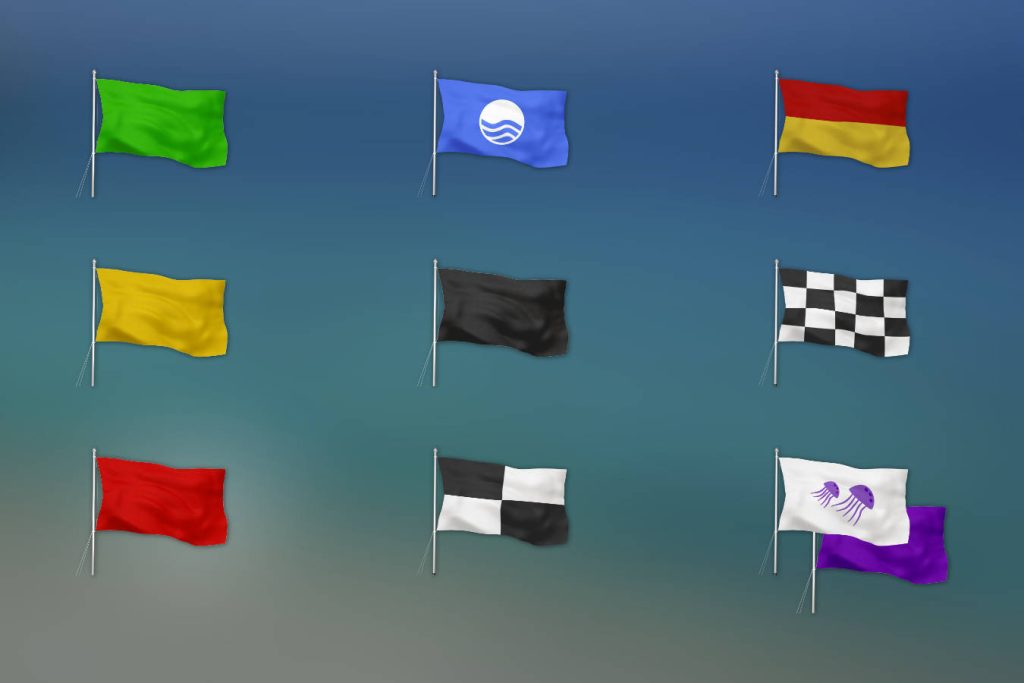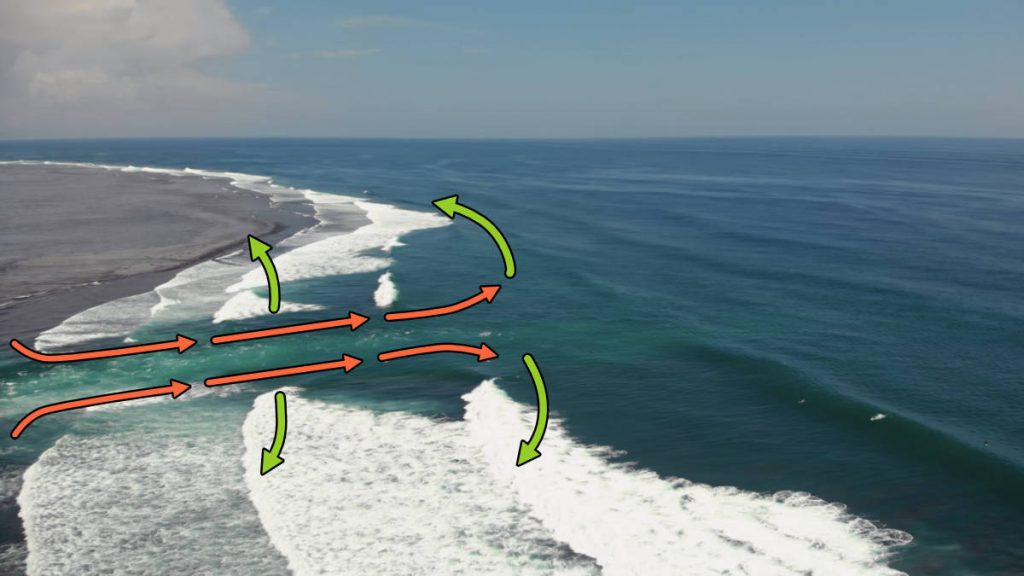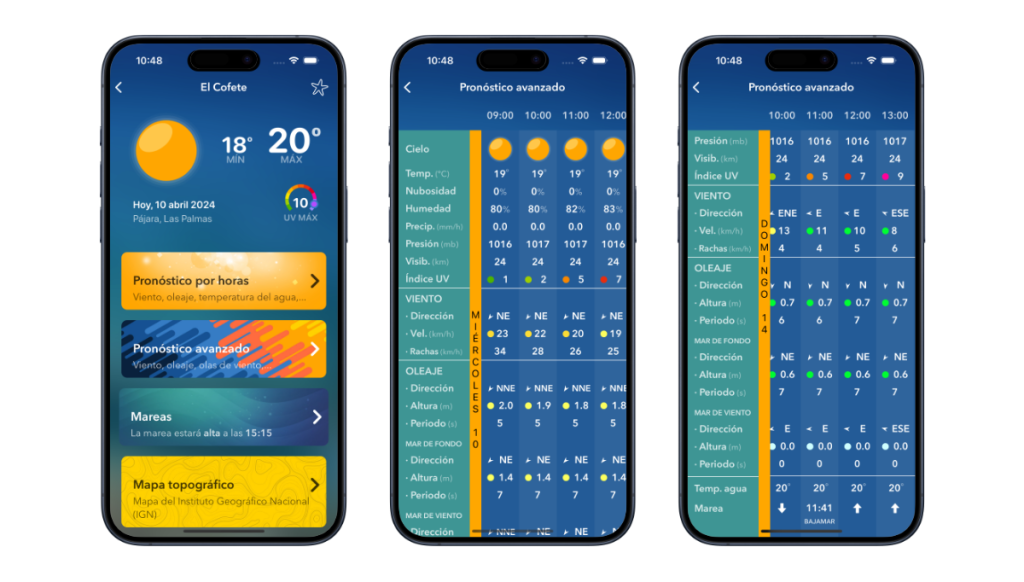Don’t let a lapse in attention ruin the fun 😉
When planning a day at the beach, safety should be a priority, especially if you’re going with children or elderly people in your care. That’s why this article is dedicated to providing you with essential safety recommendations to ensure your experience by the sea is always safe and enjoyable. Although many of these tips may already be familiar or seem like common sense, it never hurts to have as complete a list as possible.
1. Pay attention to flags and other signs, as well as lifeguard warnings
The meaning of flag colours in Spain, Portugal, and Italy is similar, but there may be flags with specific color codes that we are not familiar with.
Here are some of the most common ones:
- Green flag: swimming allowed.
- Yellow flag: swim with caution.
- Red flag: swimming prohibited.
- Blue flag: an annual award given to beaches that meet certain quality standards, services, etc.
- Black flag: beach closed.
- Black and white flag: surf zone where swimming is not allowed.
- Red and yellow flag: delineates the recommended area to enter the water (used on Portuguese beaches).
- Checkered flag: beach temporarily unguarded (used on Portuguese beaches).
- White flag with a jellyfish symbol or purple flag: used to alert when there are jellyfish or other dangerous marine life. Often used alongside the yellow or red flag.

Additionally, there may be buoys whose meanings are also important to know: yellow buoys are usually used to delimit the swimming area on the beach; red and green buoys delimit a nautical channel where you should not swim. If in doubt, check the information signs at the beach or ask a lifeguard.
2. Learn to identify when there are currents at the beach
Understanding water movements is crucial for beach safety. A rip current is a strong current generated when waves break sharply against the shore, flowing back to the sea and forming channels. This current can intensify depending on the state of the tide or the topographical features of the coast. Depending on the intensity of the rip, it can often be observed from the shore. Sometimes, you can notice changes in the water’s color or see foam forming in these return channels.
The greatest danger of the rip comes from the person’s response when caught in it. Feeling pushed by the water, one might attempt to swim against the current and exhaust themselves without being able to escape. Therefore, it is important to first know how to identify currents to avoid them, but also know how to react if caught in them:
If you feel that the force of the current prevents you from swimming to the shore, try to move out of the current area, moving parallel to the coast until you can head towards the shore. If you can’t, try to stay afloat without fighting against the current and call for help by shouting or waving your arms.

3. Stay hydrated and protected from the sun
Remember to drink enough water when you are at the beach, especially if you spend a lot of time in the sun. Carrying a reusable water bottle filled with fresh water from home is a practical tip.
It’s also important to protect yourself from UV radiation, as we mentioned in our article about the UV index. Use high SPF sunscreen and reapply frequently, wear sunglasses, a hat, and stay in the shade during times when the UV index is high. In addition to protecting you from the sun, this can also provide some protection against jellyfish stings.
4. Be careful with jellyfish, sea urchins, and other marine animals
In recent years, jellyfish populations have been increasing, making it more common to encounter them at the beach. While some jellyfish species found along the coasts of Spain, Portugal, and Italy are harmless, others can inflict painful stings and potentially severe reactions. Therefore, if you see a jellyfish, it’s best to stay away from it, especially if you are with children or particularly vulnerable people.
If you suffer a sting, remember never to wash the area with fresh water. Use sea water to clean it and remove any remnants using tweezers, without touching with your hands. And, if you can, send us a warning from the beach detail page so that other users can be alert.
As for sea urchins, you may find them in rocky areas, where other animals that produce stings if touched may also be present. If you are pricked by a sea urchin, try to remove all the spines and clean the wound well to prevent infection.
Above all, respect the environment and avoid approaching marine animals you encounter, as they may have defensive responses if they feel threatened.
5. Bring what you need for a safe swim
Although the most important thing is not to stray too far from the shore and to constantly supervise children or anyone else in our care, you might find it useful to use arm bands or life jackets for added safety. Remember that, although fun, some floaties can be dangerous if not used carefully.
Most importantly, ensure that children learn to swim at an early age for their safety and confidence in water.
Also, consider including a small first aid kit with tweezers, an antiseptic like chlorhexidine to clean small wounds, and perhaps sterile gauze or an elastic bandage to cover small cuts or scrapes.
6. Check the forecasts and the state of the tides
Use the iPlaya app to check sea conditions before you head out and remain vigilant for any changes during your visit. Sometimes, the wind can change abruptly. If there is a storm, it’s best to move away from the beach. In some places, the changes in tides are so large that they can isolate parts of the beach quickly. If you are not familiar with the area, never stray from beach accesses when the tide is rising.

Can you think of any other advice that might be useful for going to the beach? We hope this list will be helpful in planning a day by the sea. With this and a look at the app to choose your beach and check the forecasts, it’s sure to be a success.




Leave a Reply